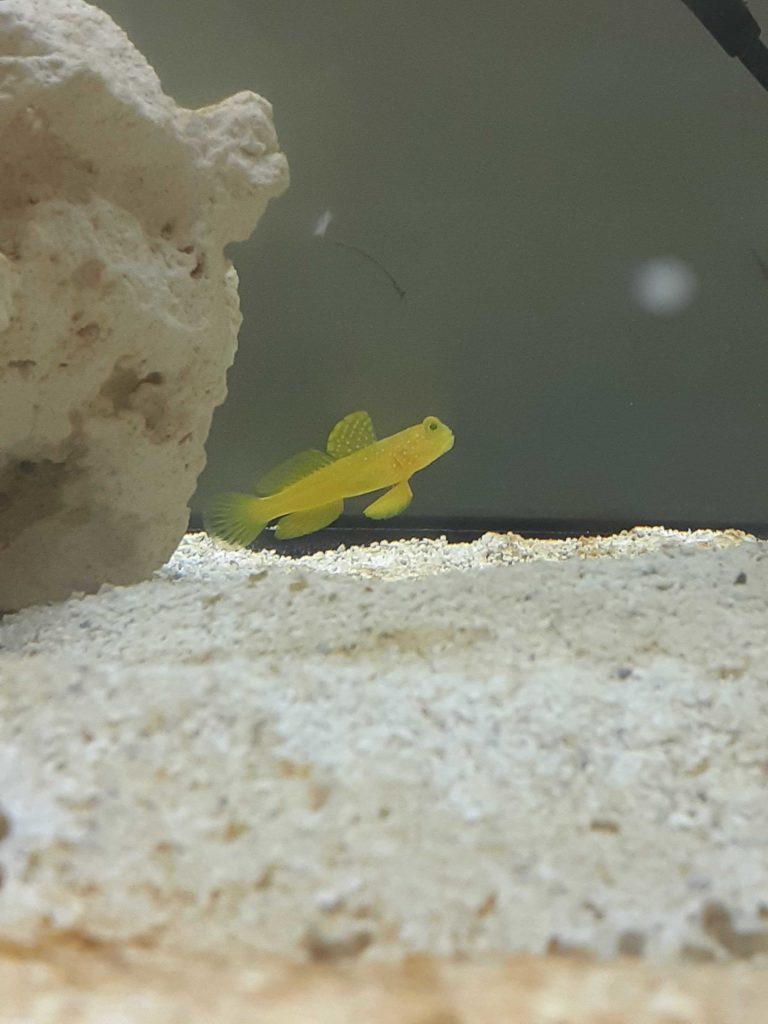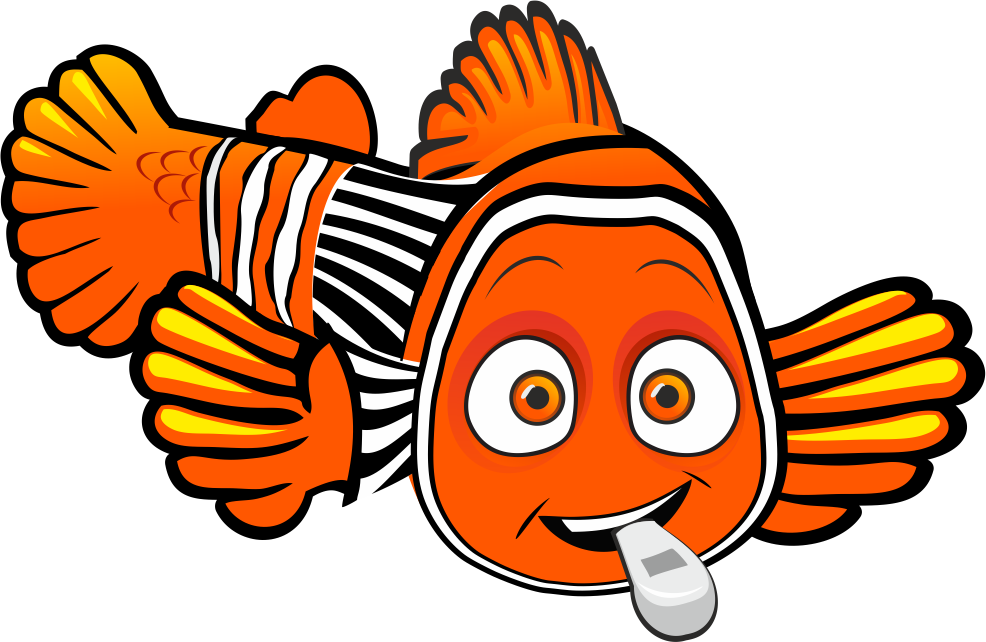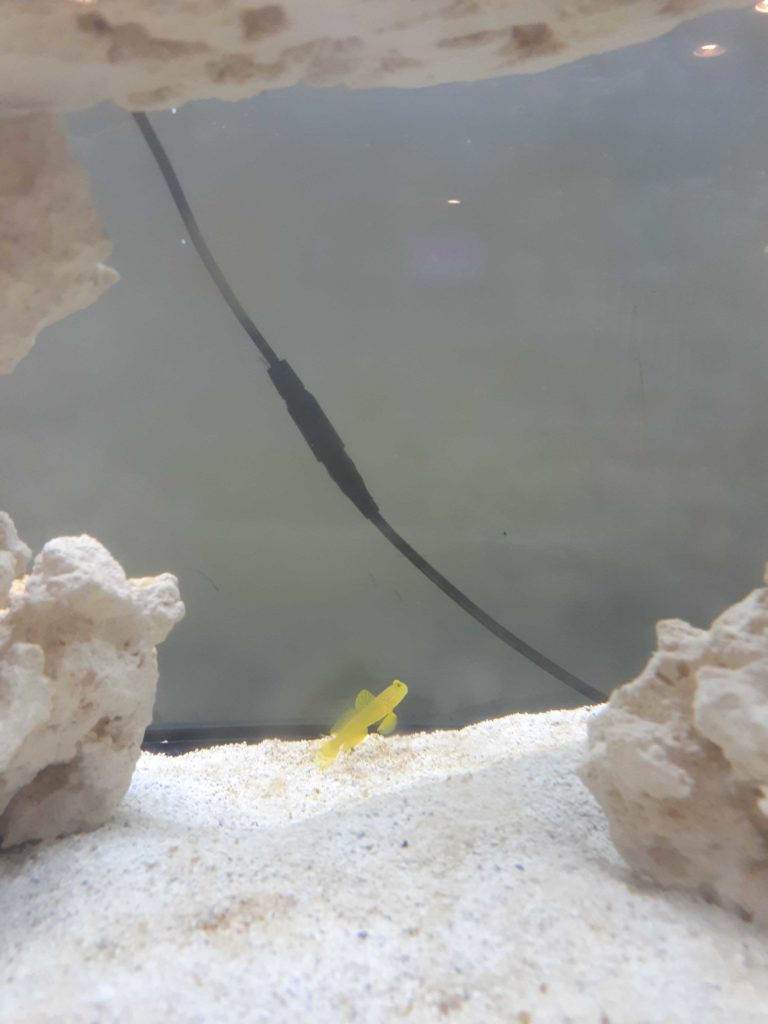- Basic Facts About Saltwater Gobies
- How will a Gobies behave in your aquarium?
- How to acclimate your Goby Fish to your fish tank?
- Most Popular Types of Gobies
- Which Species Are Best To Pair With Your Goby?
- Medicine for a Common Goby Illnesses
- Ohfishal Goby Fish Tank Set Up
- Frequently Asked Questions about Goby
Basic Facts About Saltwater Gobies

| Scientific Family: | Gobiidae |
| Number of Goby Species Types: | There are over 2000 species types of Gobies. We’ll go into more detail on some of the most popular saltwater goby species types below. |
| Average Life Span: | Gobies can live between 1 and 10 years, depending on the species. For the popular mandarin goby, the average life span is typically between 2 and 4 years. |
| Typical Size: | Gobies can range pretty drastically in size. From 1 cm to 1 foot, the sizes can be really small to rather large. However, most of the popular species types of Gobies are between 1 and 4 inches. |
| Colors: | Depending on the type of Goby, you can find almost every color combination for your choosing. The popular Mandarin Goby itself contains multiple different vibrant colors. |
| Native To: | Gobies can be both saltwater and freshwater fish. Saltwater Gobies are native to the Pacific and Indian oceans. |
| Water Conditions Needed: | Temperature (Fahrenheit): 75-86 Degrees PH Level: 7.5-8.5 Gravity: 1.002 and 1.025 |
| What Do Gobies Eat?: | Gobies eat a variety of food. You can feed them live copepods, live and frozen brine shrimp, mysis shrimp, black worms, krill, plankton, and other prepared carnivorous foods. You should likely feed them twice a day. |
| Fish-Keeping Experience Level: | Beginner – these are hardy fish that are relatively simple to care for. |
| Minimum Tank Size: | This really does vary by species type of goby, but minimum tank size should be at least 10 gallons. Our Ohfishal recommendation is a 30 gallon minimum tank size. |
| Tank Accessory Requirements: | Heater and Filter. Protein Skimmers are recommended for saltwater tanks. |
| Compatibility – Other Fish: | These are compatible with almost all other saltwater fish other than the ones found below. |
| Compatibility – Plants: | Various types of Hard and Soft Corals. Gobies really like corals. |
| Compatibility – Do not Keep Gobies With These Species: | Do not pair gobies with similar species of gobies. Other fish species you should avoid include groupers, dottybacks, triggerfishes, or certain aggressive angelfishes. |
| Can you breed them? | Yes, you can breed gobies. |
| Fun Fact: | Gobies have been known to form a symbiotic relationship with shrimp and they’ll even sleep together. 2nd fun fact, many gobies will change sex back and forth from male to female and back to male multiple times. |
| Cost: | $10-$50 Depending on the type of goby you’d like, prices will range some species are rarer than others. The goby fish can be a bargain. Shop now link. |

How will a Gobies behave in your aquarium?
Gobies are very peaceful towards other species. They may not be as friendly to their own species, so if you want to keep multiple gobies, make sure you have a bigger aquarium with space for all of them. The gobies will hang out towards the bottom of your aquarium, where they may burrow or play in the sand. Make sure that you get really fine grained sand for 0.5mm-1.7mm sugar sand for your gobies! Gobies also like hiding spots, so try to make sure that you have some rocks or spaces for them to hide in. If you leave the lid off the aquarium, they will jump out of your fish tank, so you need a tight sealing lid and you need to make sure that you keep your lid on. Certain species types may even act as cleaner fish, like the neon goby.
Personal Note: My yellow watchman goby really stays tucked away in the rocks. He’ll switch rocks sometimes, but rarely do we see him swimming freely in the tank. He sure is pretty though.
How to acclimate your Goby Fish to your fish tank?
When you get your Goby, there are a few ways you can introduce your new prized possession to your aquarium. We’ll walk you through one of the easier ways, the Floating Method, but know that there are other ways you can do this as well. The main thing we advise is to have the lights turned off, and if you have more aggressive fish, introduce the goby when the other fish are sleeping.
Floating Method:
Step 1: Turn off all lights on your aquarium and dim the lights in the room. Remember, your Goby has likely been shipped in a dark box, so we don’t want to cause them to freak out by flooding them with lights.
Step 2: Place the bag with the Goby in it in your aquarium and let it float. Don’t open the bag yet. Let the bag float for about 15 minutes. Doing this will let the temperature of the water in the bag to match the temperature of the water in your aquarium.
Step 3: Once you’ve had the bag in the water for 15 minutes, cut a small hole in the bag (if there’s a metal clip, cut the hole right below the metal clip). Open the hole wide enough, and then pour in 1/2 a cup of your aquarium water to the bag. Continue to add 1/2 cup of aquarium water every four minutes until the bag is full.
Step 4: Once the bag is full, take the bag and pour out half of the water (not into your aquarium). Repeat step 3 again. This time, when the bag is full, you’ll net your Goby and put it into your fish tank! Make sure to remove the shipping bag from your aquarium, and again, don’t pour the water from the bag into the aquarium but discard of it elsewhere (like your sink).

Most Popular Types of Gobies
- Mandarin Goby
- Firefish
- Neon Goby
- Bumblebee Goby
- Yellow Clown Goby
- Shrimp Goby
- Watchman Goby
Which Species Are Best To Pair With Your Goby?
- Shrimp (we highly recommend pairing a goby with a shrimp)
- Any passive to semi-aggressive Saltwater Fish
Medicine for a Common Goby Illnesses
- Water Changes
- Quarantine Tanks
- Get a Cleaner Shrimp
- Increase Water Temperature
- Decrease Water Temperature
- Aquarisol
- Zeolite
Ohfishal Goby Fish Tank Set Up
This is our ultimate checklist for a fish tank with a Goby. Of course, you can do this with less parts, or different parts, but this is our all-in ohfishal recommendation. This set-up will run you around $300 (market prices will vary).
- Fish Tank, Filter, and LED Light – 30 Gallon Fish Tank – $120
- Species – 1 Goby ($10), 1 Clownfish ($30), 1 Wrasse ($30), 1 Pistol/Snapping Shrimp ($25), 20 lbs of Dead Rock ($60), 5-10 Cleaner Snails/Crabs ($10-$20), 1 bottle bacteria ($25)
- Heater – $12
If you are starting your aquarium from scratch, please take it slowly. We recommend starting with the Dead Rock first with the Bacteria (for about a week or 2), and then add in your Clownfish or Wrasse. After about 2 weeks, you should be able to add in a Goby as well as the cleaner snails/crabs, and then after another 2 weeks you could add in the Clownfish or Wrasse (Whichever one you didn’t put in first). Make sure you are frequently testing your water conditions to ensure that ammonia and nitrate levels aren’t spiking. The slower you take it, the less likely you are to lose any fish or other species!
Frequently Asked Questions about Goby
Yes, you can, but you should make sure they have plenty of room. Otherwise, they will get territorial, unless they are mates.
Yes. Gobies are often recommended as one of the first species you should try to breed as they are an easier fish to breed and you can even do this in smaller aquariums.
Most gobies will live between 2-4 years in captivity. As always, this really depends on the specific goby species, your care, and scenarios of the fish tank.
